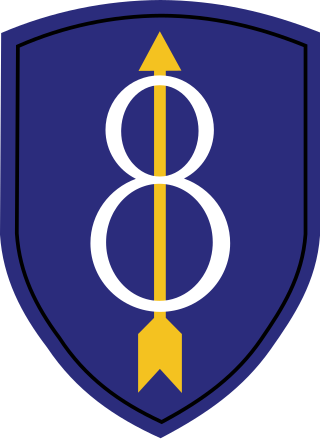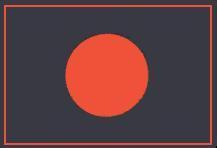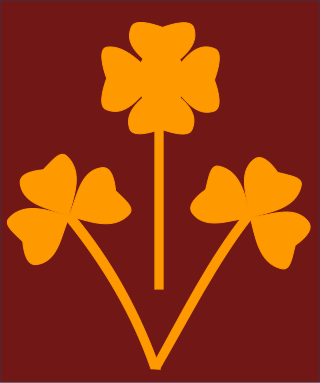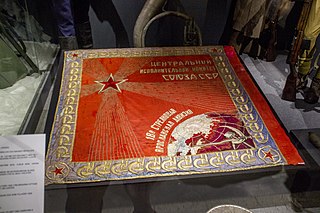
The 4th Indian Infantry Division, also known as the Red Eagle Division, is an infantry division of the Indian Army. This division of the British Indian Army was formed in Egypt in 1939 during the Second World War. During the Second World War, it took part in campaigns in East Africa, Syria, North Africa and Italy. Post independence, the division is part of the I Corps and headquartered at Prayagraj.

The 8th Infantry Division, ("Pathfinder") was an infantry division of the United States Army during the 20th century. The division served in World War I, World War II, and Operation Desert Storm. Initially activated in January 1918, the unit did not see combat during World War I and returned to the United States. Some units would serve in the American Expeditionary Force to Siberia. Activated again on 1 July 1940 as part of the build-up of military forces prior to the United States' entry into World War II, the division saw extensive action in the European Theatre of Operations. Following World War II, the division was moved to West Germany, where it remained stationed at the Rose Barracks in Bad Kreuznach until it was inactivated on 17 January 1992.
The Hungarian Third Army was a field army in the Royal Hungarian Army that saw action during World War II.

The 5th Indian Infantry Division was an infantry division of the Indian Army during World War II that fought in several theatres of war and was nicknamed the "Ball of Fire". It was one of the few Allied divisions to fight against three different armies - the Italian, German and Japanese armies.

The 18th Infantry Regiment ("Vanguards") is an infantry regiment of the United States Army. The regiment currently exists with one active battalion, under the U.S. Army Regimental System; regimental designation is used only for historical tradition, and there is no active regimental headquarters. The 18th Infantry once had up to four active battalions, but three have been inactivated:

The 8th Mountain Division was raised as the 7th Indian Infantry division of the British Indian Army. It is now part of the Indian Army and specialises in mountain warfare.
The 11th Indian Infantry Brigade was an infantry brigade formation of the Indian Army during World War II. It was relocated from India to Egypt in the middle of August 1939 and trained at Fayed in Ismailia Governorate on the Great Bitter Lake. In October 1939, it was assigned to the 4th Indian Infantry Division. In May 1942, it was attached to the 5th Indian Infantry Division and in June the 2nd South African Infantry Division when it surrendered after Tobruk was captured by the Germans and Italians in 1942. The brigade was then reformed in Egypt in October 1943 and once more assigned to the 4th Indian Division serving in Tunisia, Italy and, at the end of the war, in Greece.
The 17th Indian Infantry Brigade was an infantry brigade formation of the Indian Army during World War II.

The 20th Army was a field army of the Red Army that fought on the Eastern Front during World War II.

The 18th Rifle Division was an infantry division of the Soviet Union's Red Army during the Russian Civil War, Polish–Soviet War, Winter War and World War II. The division was formed a total of five times during this period.
The 11th Guards Rifle Division was a rifle division of the Red Army during the Great Patriotic War. It was disbanded in 1946.
The 1st Motorised Brigade was a formation of the Royal Hungarian Army that participated in the Axis invasion of Yugoslavia during World War II.
The 2nd Motorised Brigade was a formation of the Royal Hungarian Army that participated in the Axis invasion of Yugoslavia during World War II.
The 10th Infantry Brigade was a formation of the Royal Hungarian Army that participated in the Axis invasion of Yugoslavia during World War II.
The 11th Infantry Brigade was a formation of the Royal Hungarian Army that participated in the Axis invasion of Yugoslavia during World War II.
The 14th Infantry Brigade was a formation of the Royal Hungarian Army that participated in the Axis invasion of Yugoslavia during World War II.
The 13th Infantry Brigade was a formation of the Royal Hungarian Army that participated in the Axis invasion of Yugoslavia during World War II.
The 15th Infantry Brigade was a formation of the Royal Hungarian Army that participated in the Axis invasion of Yugoslavia during World War II.
The 19th Infantry Brigade was a formation of the Royal Hungarian Army that participated in the Axis invasion of Yugoslavia during World War II.

Wilhelm Josef Daser was a German military officer who commanded the 70th infantry division of the Wehrmacht during the Battle of the Scheldt and surrendered unconditionally on 6 November 1944 in Middelburg.







